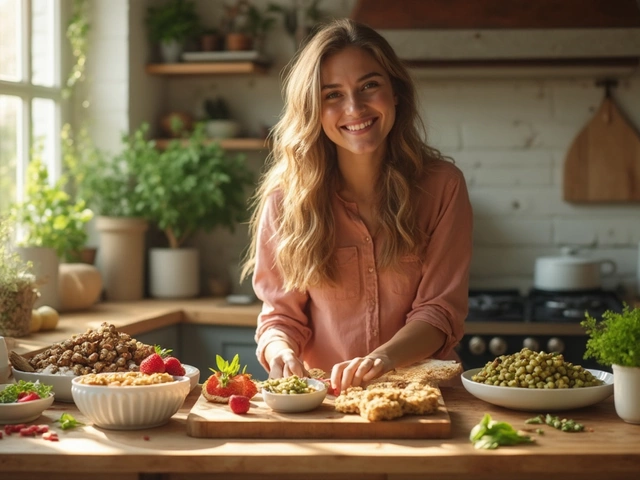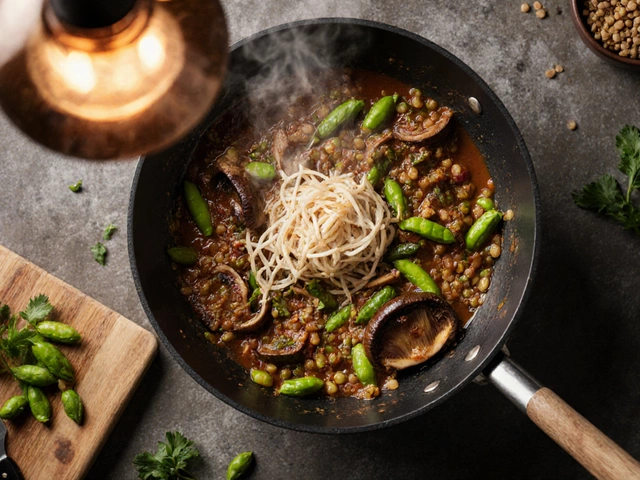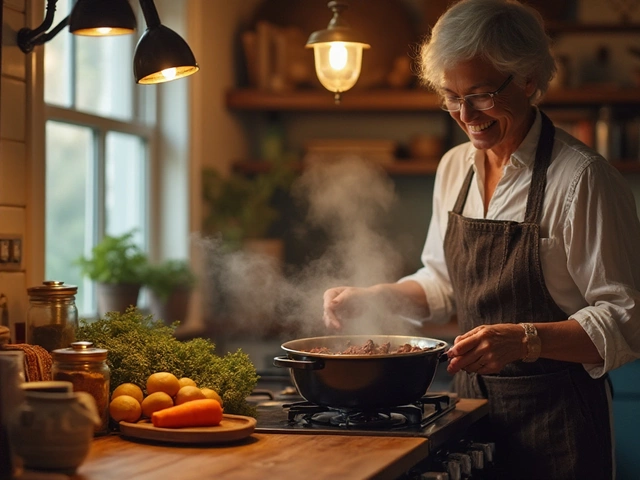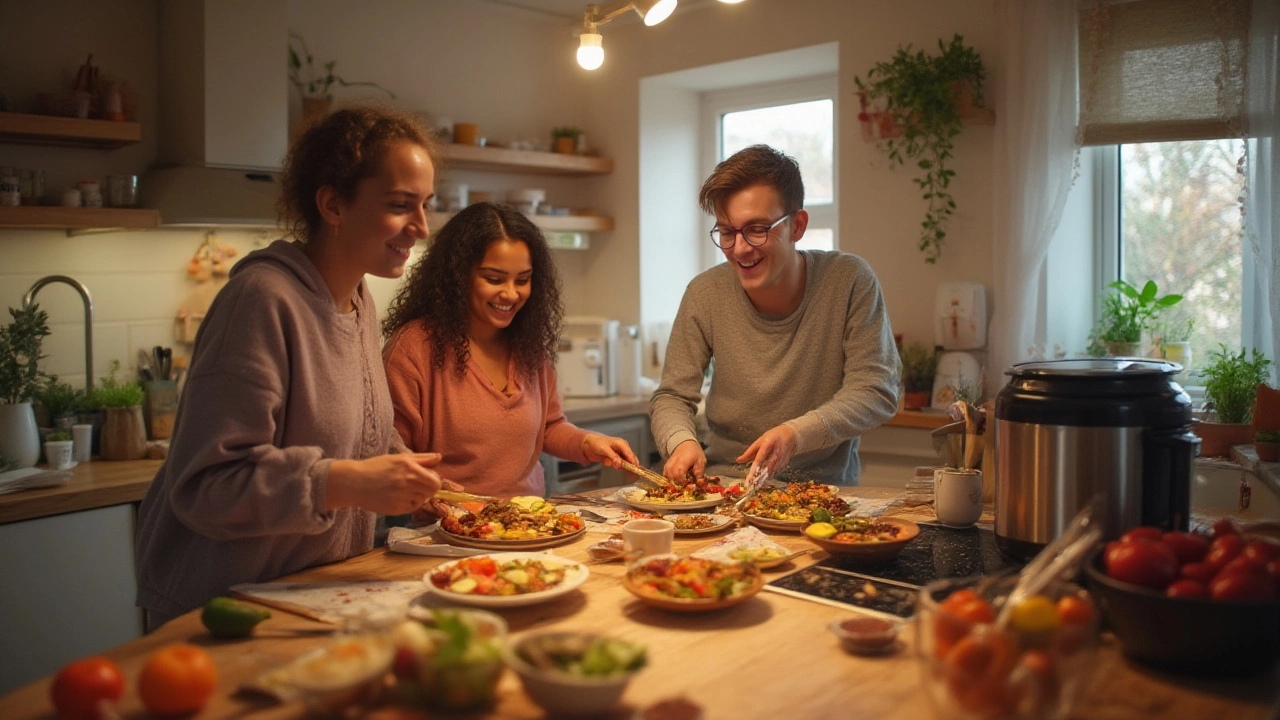
Ever pulled out chicken in the morning, chucked it in the crockpot, and counted on dinner being ready when you got home—only to realize you forgot to turn it on? Or maybe you just can’t spend eight hours waiting for beef stew on a Tuesday. The reality is, crockpots (or slow cookers, call them what you want) are awesome for hands-off cooking, but they’re not made for speed. The world’s gotten busier, and if your family is anything like mine, schedules are packed, appetites are big, and patience for waiting is thin. So what actually cooks faster than a crockpot, and is it still tasty, healthy, and something the kids won’t groan about?
Why Crockpots Are So Slow: The Science
The reason crockpots take forever isn’t just tradition—it comes down to temperature. Crockpots typically cook at temperatures between 170–280°F (77–138°C). This is what makes them the king of tender, fall-apart meat, but it’s also why you’re stuck daydreaming about dinner all afternoon. By simmering food gently, crockpots break down tough fibers (like in brisket or pork shoulder), but this is a marathon, not a sprint. Most crockpot recipes are 6–10 hour affairs, and even “high” doesn’t exactly mean fast.
Crockpots use moist heat—basically, they heat up the liquid, turn it to steam, and cook the food low and slow. This method keeps food juicy, but you sacrifice that crispy texture you get from roasting or air frying. On the plus side, all that gentle heat locks in flavor and helps hands-off cooks stay hands-off. But—when you forget to plan or your schedule changes (or if a kid suddenly announces they need a treat for tomorrow’s class party), you need options. Before we go deep into what’s faster, check out how long various devices actually take to cook a chicken breast below:
| Device | Cooking Time (Chicken Breast) |
|---|---|
| Crockpot (Low) | 6 hours |
| Crockpot (High) | 3 hours |
| Oven | 25–35 minutes |
| Instant Pot (Pressure Cooker) | 8–12 minutes |
| Stovetop (Pan Sear+Simmer) | 20 minutes |
| Microwave | 4–7 minutes |
| Air Fryer | 15–18 minutes |
That’s a pretty clear jump in speed. Turns out, most kitchen gadgets can leave a crockpot in the dust if urgency is your main ingredient. But before you ditch your grandmother’s chili recipe, let’s talk about what these faster methods are actually good at—and where they can let you down.
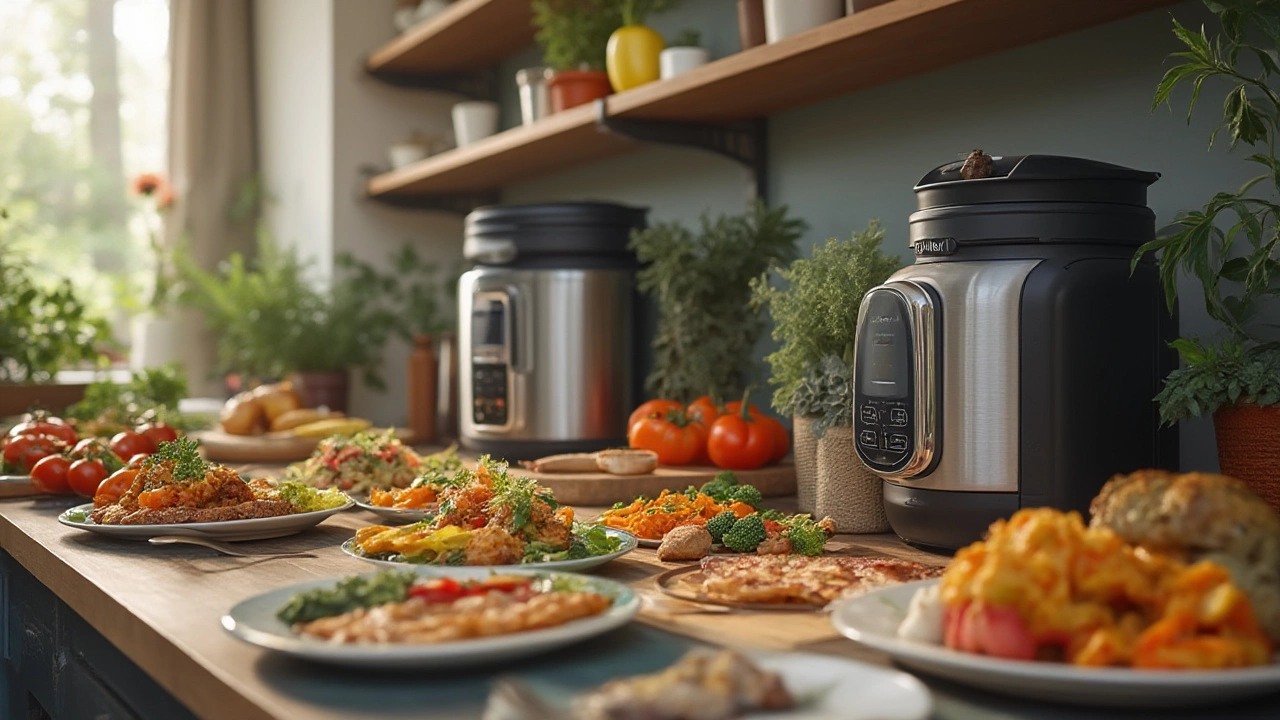
The Fast Lane: Pressure Cookers, Air Fryers, and More
Step aside, slow cookers—the race for quick dinners is on. The first real challenger is the pressure cooker, and yeah, I mean modern gadgets like the Instant Pot. Instead of simmering, these heat food under high pressure, bumping water’s boiling point above 212°F/100°C. That gives you food that’s not just cooked, but tender, in a quarter of the time. For beef stew, what takes 8 hours in a crockpot is ready in under an hour, bones and all falling apart like magic. Even dry beans skip the overnight soak and turn edible in 25–30 minutes, no kidding.
The science? Pressure cookers trap steam in a locked pot. Higher pressure means higher heat and moisture forced into the food. That breaks down collagen in meat much faster without drying it out. Plus, families swear it’s almost impossible to screw up rice or a whole chicken. Pressure cookers have exploded (not literally, they have way more fail-safes than your grandma’s rig) in popularity. Pick up a 6-quart model and you’ll see why—they’re sturdy, mostly foolproof, and the sauté function means browning meats and building flavor happens in one spot.
Right behind the pressure cooker comes the air fryer. Now, I’ll get some flak for this, but air fryers really do turn out speedy meals that beat any slow cooker. Air fryers work by blasting hot air (about 400°F) around your food, crisping up the surface in record time. You get golden fries, crispy chicken wings, or roasted broccoli in under 20 minutes. It kind of mimics a convection oven but in turbo mode. My kid, Bryn, isn’t always convinced vegetables are a treat, but after tossing some Brussels sprouts in the air fryer with olive oil and parmesan, nothing comes back to the kitchen un-eaten.
If you’re wondering what meals pull ahead in an air fryer, here’s a quick short list:
- Chicken breasts or thighs (14–16 minutes for juicy meat)
- Frozen breaded fish or shrimp (8–10 minutes, no thawing)
- Baked potatoes with crispy skin (35 minutes, but no preheating or foil required)
- Roasted vegetables (under 15 minutes)
- Homemade chicken nuggets (10–12 minutes, with real crunch)
It pays to preheat the air fryer (just 2–3 minutes), shake the basket for even cooking, and don’t crowd too much food in or you’ll lose that crisp. Also, with air fryers and pressure cookers, you’re using less oil and energy, and you won’t heat up the kitchen the way an oven does in July.
Stovetop methods are the OG of quick dinners. Stir-frying, sautéing, and boiling get noodles, eggs, or stir fry on the table fast. A wok at high heat lets you whip up fried rice in under 10 minutes, and nothing beats the classic pasta-and-sauce meal when you need something now. Broiling in the oven (which is like upside-down grilling) gets salmon or thin steaks cooked in 5–8 minutes. Even microwaves can be game changers for re-heating or flash-steaming veggies and leftovers. If you’re making mug cakes, a microwave is basically the only way.

Making the Switch: What to Know Before You Speed Up Dinner
No one’s saying toss out your crockpot—it’s a lifesaver for certain things. The point is, your kitchen is probably stocked with tech that can cook dinner way faster. But there are a few quirks to each gadget, and trade-offs you might not expect.
First, crockpot alternatives work best when you match the method to the meal. Pressure cookers make killer soups, stews, and braised meats. They’re unbeatable for beans, grains, and even yogurt (if you’re into that sort of thing). But if you love that cheesy crust on lasagna, pressure cookers aren’t for browning—though you can finish the dish under your oven’s broiler for a minute if you want those crispy edges.
Air fryers win for things you want crunchy and quick, but sometimes larger meals need to be cooked in batches if you’re feeding more than a few people. Some options come with racks for doubling up, so keep an eye out for accessories. If you’re upgrading, “dual basket” air fryers let you cook meat in one side and fries or veggies in the other—same time, zero complaints. Cleaning can be a pain if you don’t oil baskets lightly, though, so nonstick spray is your friend.
Stovetop meals are the athlete of dinner options: fast, versatile, but needing some attention. Stir-frying gets dinner on the table in less than 15 minutes, but you can’t just walk away. The oven’s broiler is epic for caramelizing tops and finishing off casseroles, but stuff burns quicker, so keep an eye out. Microwaves get a bad rap, but for things like steaming broccoli, melting butter, or quick oatmeal, it’s hard to argue with three minutes vs. an hour.
Let’s not forget some hacks: batch-prepping ingredients means dinner is mostly assembly, not active cooking. Rotisserie chicken can jumpstart a dozen meals. Using pre-washed greens or frozen vegetables saves precious minutes most nights. And if you’re trying to win over picky eaters, getting them involved as “sous chefs” (read: veggie choppers or cheese sprinklers) means fewer dinner battles and an actual head-start on meals.
Still, slow cookers aren’t obsolete. They’re unbeatable for certain cuts of meat, hands-off cooking, and that rich flavor you get from all-day simmering. But if you’re short on time, a pressure cooker, air fryer, or stovetop is probably your best friend in the kitchen. Try experimenting to see which gadget can get your family from hangry to happy—the results are bound to be worth it.

